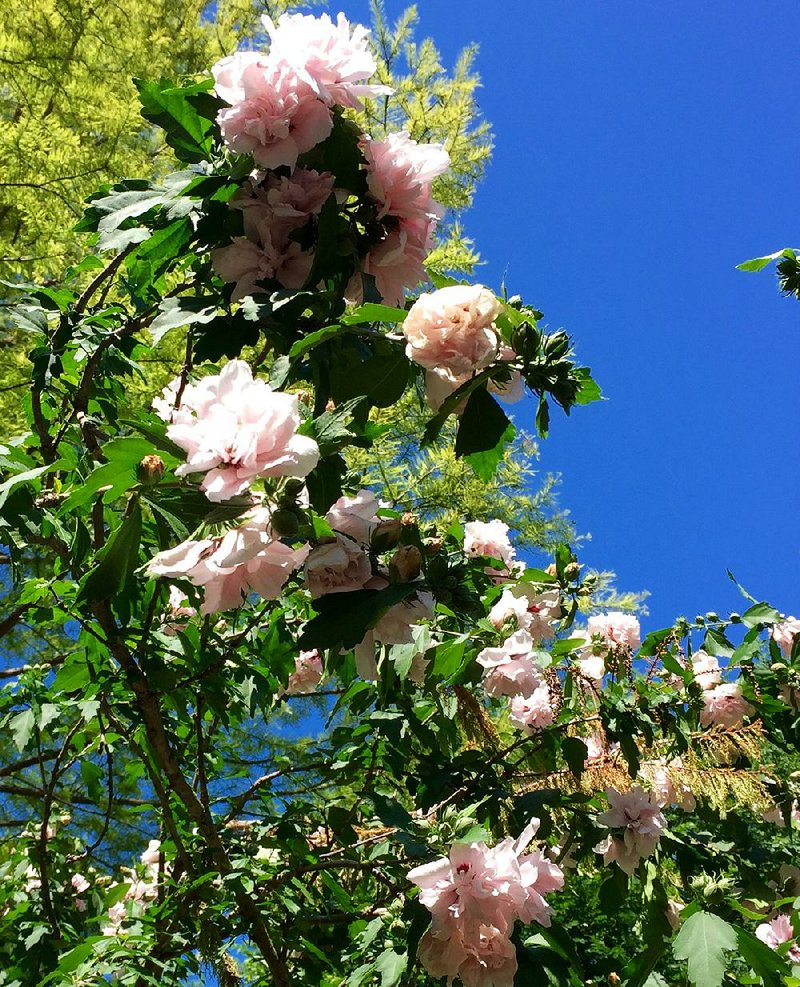Q We live in Hot Springs Village, and year after year the plants in the photo I have enclosed are always a pleasure to see in early summer in the same area. Not sure what they are but they have a beautiful orange flower and we look forward to them every year. Is it a weed or a wildflower?
A The plant in question is considered by most to be a wildflower. It's called butterfly weed (Asclepias tuberosa). It is in the milkweed family and great for monarch butterflies. The plants are poisonous and typically left alone by wildlife; however, I got this email from a reader this week: "In your article on June 6, you said that deer would not eat butterfly weed. I also believed that was true based on past observations and experience. I have 10 or so plants with 25 to 30 stalks that were heavy with buds and some beginning to bloom and showing the beautiful orange color. Something came along on the night of June 8 and nipped and presumably ate the buds and about the top 4 inches of stalk. The ground was soft and showed numerous deer tracks. I found no other animal tracks. I live in the middle of the woods in very rural Marshall and have since noticed that the butterfly weed that normally blooms in the fields and ditches between my place and town is not blooming this year. Maybe because the buds are being eaten? Maybe the teenage deer are eating it on a dare by the elder teen deer. Maybe the deer are, as the monarch butterfly does with milkweed, developing poisons in their systems and becoming venomous. Probably not; most likely the buds are sweet and have not developed the poisons that are in the mature stems."
I have often said that deer don't read the deer-resistant plant list, but this is pretty unusual. Butterfly weed is considered toxic in large quantities, but the American Indians did chew on the tough roots to cure pleurisy -- not something we would recommend doing today.
Q My daughter has this tree in her yard. The bloom looks like a peony but we know peonies don't grow on trees. Can you identify it?
A The "tree" in question is an althea, often called a Rose of Sharon. They come in pink, white or purple flowers with single or double blooms -- this one is a beautiful double. It can be pruned as much or as little as you would like in late February before it begins growing, and it blooms on the new growth. It can be grown as a bush or a small tree. This plant is stunning, and yours is obviously quite happy. I think this has been one of the showiest years for althea.
Q Something is chewing my hosta off below the ground. Cannot see what the pest may be. Any suggestions about what it may be and how to eliminate it?
A Deer love hosta, probably one of their most favorite things to eat, so if you live where deer come and go, one of them could be the culprit. Rabbits have also been known to eat hostas. Slugs are another common pest, but they rarely eat the stems to the ground -- usually leaves will be riddled with holes. For animal control, there are a few options, but none is foolproof. Spraying animal repellents, setting up scare devices and making loud noise are all options. Some folks have luck spraying the plants with milk or eggs to ward off deer, but I'm not sure if that would work against rabbits.
Q Is now the time to prune my mophead and oakleaf hydrangeas back to the ground or should I wait until after the blooms (what few I have) have withered? If you do not recommend trimming them to ground level, how tall should I leave the bushes after trimming them?
A Only prune if needed. I would never remove them all to the ground. Both the oakleaf hydrangea (Hydrangea quercifolia) and the big leaf hydrangea (Hydrangea macrophylla) bloom in the summer but set flower buds in the fall. If you need to reduce their size, the time to prune is when the flower heads are fading. Removing up to a third of the older canes at the soil line is the recommended approach -- if the plants need pruning. If they are planted in a site where there is room to grow, they don't have to be pruned at all.
Janet B. Carson is a horticulture specialist for the University of Arkansas Cooperative Extension Service. Write to her at 2301 S. University Ave., Little Rock, Ark. 72204 or email her at
jcarson@arkansasonline.com
HomeStyle on 06/27/2015

